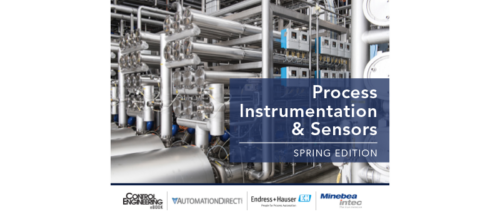Pin-up controls
As we gear up for our 50th anniversary celebration next month, we decided to start the party a little early with a special gift to subscribers—a super-sized poster depicting key advances in control, automation, and instrumentation over the last 50 years. That's right; controls and automation have now achieved pin-up status.
As we gear up for our 50thanniversary celebration next month, we decided to start the party a little early with a special gift to subscribers—a super-sized poster depicting key advances in control, automation, and instrumentation over the last 50 years. That’s right; controls and automation have now achieved pin-up status.
Deciding what to include on the poster proved to be a difficult process. To help narrow the focus, it was determined that the concept would revolve around the measurement-decision-actuation loop central to all controls. That was the easy part. Depicting representative control and automation facts and illustrations in a way that would also provide a useful, practical reference for engineers proved to be a bit more difficult. With the parameters of relevant, useful, and practical in mind, it was decided to include the following items in the corresponding areas of the loop:
-
Measurement—discrete and process sensors listing, proximity sensor installation distance, how to read a P&ID, and flowmeter selection guidelines.
-
Decision—PID formula, ISO open systems interconnection reference model, IEC 61131 programming examples, and the major embedded form factors.
-
Actuation—cross-section of a valve and actuator, diagram of a motor and its components, and a table comparing variable speed drive characteristics.
Connecting these three areas of the control loop is a continuous line listing the principal networks in industrial automation.
By the time the editors narrowed the poster’s content to the items listed above, piles of great stuff lay on the cutting room floor. The abundance of core, practical control principles, coupled with the many advances made in the past half century, gave us enough information for at least half a dozen such posters.
I’m sure we’ll receive calls and letters about all the great things we left off the poster. Rest assured, we’re aware—all too aware—of the advances we could’ve, should’ve, would’ve put on the poster … if only we had the space.
In an effort to incorporate at least a few of those items, the editors combined them into lists included at the top of the poster—divided among the major topic areas covered by the magazine.
One of the highlights of this poster is an introduction by Ed Kompass, former editorial director of Control Engineering (retired 1987). Ed describes pre-electronic controllers during the magazine’s inception and lists the coverage of developments in solid-state electronic control as one of the early markers that set Control Engineering apart. This bit of insight from Ed is an excellent percursor to his column scheduled to appear in our 50thanniversary issue next month.
I hope you enjoy viewing and using the poster as much as we enjoyed putting it together.
Do you have experience and expertise with the topics mentioned in this content? You should consider contributing to our CFE Media editorial team and getting the recognition you and your company deserve. Click here to start this process.


